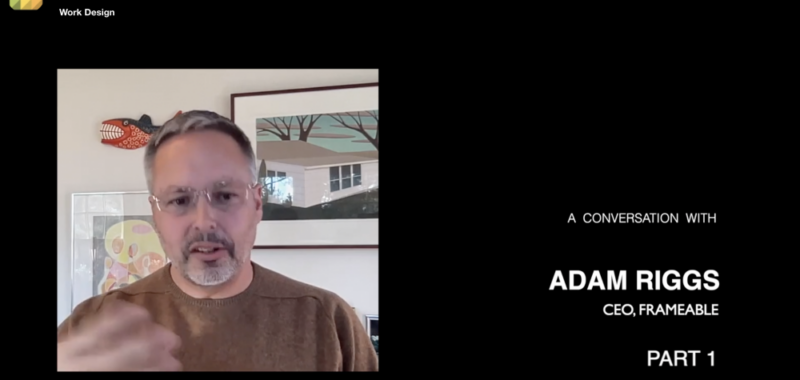The Biggest Difference (1:06):
 Frameable, our starting point is really the end user experience on the computer. What I mean by that is if you’re a landlord, the Crestron systems, the card swiping systems, the hot desk systems, these are systems that your employees may or may not interact with directly, but they help you run a more efficient workplace. For us, we think about the end user experience and we are focused on Microsoft Teams because more than 300 million people use Teams for their text chat, for their video calls, and they have a view into their calendar all through Microsoft Teams. So if you work for a company that is already committed to Microsoft, then Microsoft Teams is an important part of your toolkit. What we are doing is we are thinking about what are the parts of the user experience where there’s maybe an additional amount of friction that we could try and remove or a different way of presenting something that Microsoft hasn’t offered out of the box, that’s going to make it easier for people who are not physically together to overcome that distance between them to do really amazing, beautiful work at volume, at scale, and with a high degree of velocity.
Frameable, our starting point is really the end user experience on the computer. What I mean by that is if you’re a landlord, the Crestron systems, the card swiping systems, the hot desk systems, these are systems that your employees may or may not interact with directly, but they help you run a more efficient workplace. For us, we think about the end user experience and we are focused on Microsoft Teams because more than 300 million people use Teams for their text chat, for their video calls, and they have a view into their calendar all through Microsoft Teams. So if you work for a company that is already committed to Microsoft, then Microsoft Teams is an important part of your toolkit. What we are doing is we are thinking about what are the parts of the user experience where there’s maybe an additional amount of friction that we could try and remove or a different way of presenting something that Microsoft hasn’t offered out of the box, that’s going to make it easier for people who are not physically together to overcome that distance between them to do really amazing, beautiful work at volume, at scale, and with a high degree of velocity.
So we see our place in the technology puzzle as being different from the infrastructure control systems like the ones I mentioned. But we also in a way see ourselves as equally indispensable going forward because at the end of the day, the lighting has to be great in your physical offices, people need to get in and out, but when they sit down at their desk; it’s really the tools that they are able to use at their desk with their colleagues that are not physically able to look over their shoulder that sometimes make the biggest difference.
The Technology Worked! (03:06):
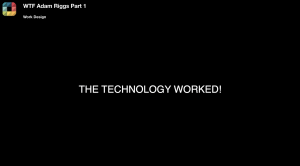 What happened during the Covid medical emergency of 2020 to 2022 is that a set of tools that were not designed to, we could say bear as much weight as they were made to bear during that period? They held up pretty well, I must say. I mean, I think it was a big change for the humans to use them in the way that we did and as much as we needed to use them in order to get through that difficult period. But the tools did serve their purpose and they did help us get the job done. The question now is we’re not in a medical emergency, but everybody knows that we’re not going back to 2019. Companies have a different understanding of the labor market, of what the labor market wants, of the flexibility of the labor market, and in some ways the lack of flexibility now when it comes to things like wanting just to be able to have the option of coming in a little later than usual, leaving a little earlier, taking a gap in the middle of the day, having a few days a week where you have meetings, but then also having a few days a week where you’re able to work from another location.
What happened during the Covid medical emergency of 2020 to 2022 is that a set of tools that were not designed to, we could say bear as much weight as they were made to bear during that period? They held up pretty well, I must say. I mean, I think it was a big change for the humans to use them in the way that we did and as much as we needed to use them in order to get through that difficult period. But the tools did serve their purpose and they did help us get the job done. The question now is we’re not in a medical emergency, but everybody knows that we’re not going back to 2019. Companies have a different understanding of the labor market, of what the labor market wants, of the flexibility of the labor market, and in some ways the lack of flexibility now when it comes to things like wanting just to be able to have the option of coming in a little later than usual, leaving a little earlier, taking a gap in the middle of the day, having a few days a week where you have meetings, but then also having a few days a week where you’re able to work from another location.
Distributed Work (04:26):
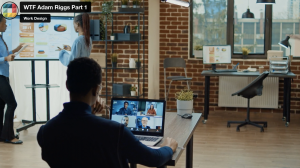 I think the conversation about work from home, there’s nothing wrong with working from home, I am working from home right now, but I think the bigger conversation of distributed work and the slightly more narrow conversation about working from home, they are distinct. Distributed work means for us, anytime you’re working with people in a very important way, in a critical way and you’re not physically together, you are distributed. That could be a company that has five locations and everybody goes into the office a hundred percent of the time to five locations that are controlled by the company and so as long as you’re working with someone from the other four locations, you’re working in a distributed way. A lot of people we talk to say, actually, we’ll go further than that and say that at this one location we have 10 floors and we don’t always walk to the desk of the person that we’re working with.
I think the conversation about work from home, there’s nothing wrong with working from home, I am working from home right now, but I think the bigger conversation of distributed work and the slightly more narrow conversation about working from home, they are distinct. Distributed work means for us, anytime you’re working with people in a very important way, in a critical way and you’re not physically together, you are distributed. That could be a company that has five locations and everybody goes into the office a hundred percent of the time to five locations that are controlled by the company and so as long as you’re working with someone from the other four locations, you’re working in a distributed way. A lot of people we talk to say, actually, we’ll go further than that and say that at this one location we have 10 floors and we don’t always walk to the desk of the person that we’re working with.
A lot of times we’re working with someone who is on another floor and for the most part it’s the same distributed experience. It might feel a little different because you know they’re nearby, but your experience with them in a video call or using a whiteboard product or something where you’re using digital tools to simulate the togetherness part is not different. They may be in Cleveland, they may be in San Francisco, or they may be three floors up. So distributed work for us means all of these scenarios. Work from home is a specific type of scenario that is included, but what we’d like to see is we’d like to see the conversation and we’d like to see the tools evolve in a way that really match or correlate with the distributed work conversation at the highest level. And there’s a work from home component that’s very specific, but really distributed work is what the people who make software should be focused on. What we’re most excited about is watching what the tool makers (including ourselves) do to try to improve distributed work for everyone.
Face to Face, Shoulder to Shoulder (06:43):
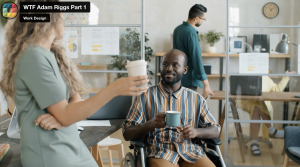
One of the most interesting distinctions that I’ve read lately and thought about in the context of working with other people and working with them physically versus remotely is the distinction between being face-to-face as opposed to being shoulder to shoulder. So when you are face-to-face, a video call can really get you a lot of the way there for face-to-face type interactions. Now it’s not the same as being in the room with another human. You can’t quite get as much of the facial expression signal. You can’t get quite as much of the breathing and rhythm and the other things that sort of make up the signal broadly about how someone’s reacting to something. It’s not exactly the same, but it’s pretty good. I think that shoulder to shoulder tools are different. Shoulder to shoulder moments are very different when you are working shoulder to shoulder in person versus shoulder to shoulder digitally.
And there I think there’s a lot more room for improvement in the tools themselves to help people feel like they can tap the deepest reservoirs of their creativity and their productivity when they are working together with someone, but they are working together on a thing. They are collaborating together and it’s not always the case that it’s a face-to-face sharing of ideas. It could be that we’re looking at a design, we’re looking at a piece of code, we’re looking at a piece of copy, we’re looking at an advertising strategy or budget. And so screen sharing at the most basic level is sort of like the initial building block. I think that there is a lot more that can be done to enhance the basic screen sharing experience and I also think outside the context of the interaction with the person, there’s a lot more that can be done on the presence issue, which is how can I feel connected and how can I be visually connected to other people if I’m not interacting with them directly?
One of the things that happens in a physical office is that you are aware that you’re surrounded by a lot of people that you may not be interacting with now, but you’re getting a visual reminder that they’re around, they’re available, maybe they’re not available at this exact moment, but you could wait for a moment where they were available if you had something for them. The whole difference between scheduled and unscheduled interactions, it is something that’s been written about a lot. I don’t have a problem with either end of that spectrum, but I think that what hasn’t quite yet happened, this is one of the problems we are working on ourselves, but what hasn’t happened yet is we as a workforce, haven’t quite figured out how to give people the same feeling of connectedness to those they’re not immediately interacting with when they are physically distributed from those people.
A lot of the building blocks are there. We’re not the only company that’s working on this problem, but this is a very important problem to solve because all the research shows that there are a lot of advantages to distributed work, including work from home, but with adjustments here, but there are some disadvantages and there is a real loneliness and a real disconnectedness that comes along with it. And for some people, for their personalities, that’s a high price to pay. So this is really a problem worth solving. How can we create either visual cues or other types of opportunities to connect with or to be poised to connect with people without scheduling something for the calendar? And I think that’s the most exciting area where we have the most work to do.
The Attributes of the Physical Office (10:55):
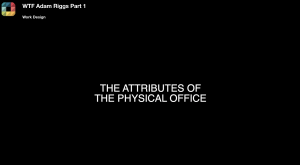 The physical office is going to continue to evolve in the direction of priority on open air, priority on natural light. When we are in an office, we want the right mix of private spaces and public spaces. We want great natural light, we want great air circulation. We want some trees on a roof deck or in a park nearby. These are well understood human level interests or needs that need to be met. People maybe have an understanding of how much time they want to be in an open type area and how much time they may want to have privacy. Privacy doesn’t mean you’re doing something in secret, it just means you want an extra layer before you can be interrupted. You close the door, not because you don’t want anyone to knock, but sometimes just because you want that knock to help you transition from what you are doing to what the other person is interested in.
The physical office is going to continue to evolve in the direction of priority on open air, priority on natural light. When we are in an office, we want the right mix of private spaces and public spaces. We want great natural light, we want great air circulation. We want some trees on a roof deck or in a park nearby. These are well understood human level interests or needs that need to be met. People maybe have an understanding of how much time they want to be in an open type area and how much time they may want to have privacy. Privacy doesn’t mean you’re doing something in secret, it just means you want an extra layer before you can be interrupted. You close the door, not because you don’t want anyone to knock, but sometimes just because you want that knock to help you transition from what you are doing to what the other person is interested in.
Some people close their door and say, put a sign on the door that says, “please come in”, but you can see that person approaching, you can maybe hear the knock and it helps you transition. There’s a better understanding now. It’s not just about space efficiency, it’s about the flow of the office and being able to talk about the advantages and disadvantages of each type of being for each type of employee. What you’re looking for is a balance where people are motivated, they are inspired, they are efficient, they are creative, and they have these qualities and their work has these qualities and the architecture, the design, the interior design, the location of the office, all play a part in building up somebody’s sort of psychographic profile for how good is the work they’re going to do today.
Mentorship (12:53):
 One of the understood disadvantages of distributed work is in the mentoring moment, and that goes back to the scheduled versus unscheduled interaction. You could be an entry-level employee of any kind, an accountant, a banker, any type of job; If you are starting your career, you are hopefully in a position to learn a tremendous amount by being exposed to the decisions and the deliberations of the people who have been doing this job for 10 or 20 years longer than you. Some of those moments of exposure can happen in a scheduled way and that’s fine. Maybe you’re invited to what we used to call back bench in a big meeting. You don’t sit at the table, you sit on the outside, you take notes, you listen, you have a chance to brief on it afterward. You have a chance to ask questions afterward, but you’re not really an active participant. In a scheduled meeting if you’re invited, even if you don’t have a role, there’s a tremendous opportunity for you to listen, to absorb, to process, to question later and to have a benefit.
One of the understood disadvantages of distributed work is in the mentoring moment, and that goes back to the scheduled versus unscheduled interaction. You could be an entry-level employee of any kind, an accountant, a banker, any type of job; If you are starting your career, you are hopefully in a position to learn a tremendous amount by being exposed to the decisions and the deliberations of the people who have been doing this job for 10 or 20 years longer than you. Some of those moments of exposure can happen in a scheduled way and that’s fine. Maybe you’re invited to what we used to call back bench in a big meeting. You don’t sit at the table, you sit on the outside, you take notes, you listen, you have a chance to brief on it afterward. You have a chance to ask questions afterward, but you’re not really an active participant. In a scheduled meeting if you’re invited, even if you don’t have a role, there’s a tremendous opportunity for you to listen, to absorb, to process, to question later and to have a benefit.
But if you’re not invited and many times you’re not invited, that puts additional pressure on moving those mentorship opportunities where you are hopefully going to receive and observe some of those things into unscheduled moments. And so if you are working in a fully distributed company or if you’re working in a company like the one I described where two thirds of the people only come in two or three days a week or everybody comes in every day, but there’s other satellite offices, you’re not together. A calendar can only contain so many meetings and it’s difficult to be invited to every key moment. I think that for mentoring young people and for young people deciding what kind of scenario or setup they want to join out of school, I think it’s important to ask yourself and to ask the company, what are the tools that help me overcome this builtin disadvantage when it comes to being distributed from the people who are potentially going to teach me the most?
And I think that’s a reasonable question. I don’t think there’s a right answer. There are many kinds of processes and tools that can help improve this challenge or it can help address this challenge. I think the important thing is to have it in mind as a young person to ask the question when you’re interviewing and to just try to understand how does mentorship work at this company? I’m in my early twenties, I’m here to learn. I’m here to do the work that you’re asking me to do, but I’m also here to learn how to be excellent at something and I know that part of that learning is going to come from doing the tasks and getting the feedback on the tasks. And part of that is going to come from these unscheduled moments, possibly opportunities, and just generally being observant. How can I be observant when the senior partners are only coming into the office one day a week?
I think asking that question and just listening, and if it’s a thoughtful response and it adds up to you that that is important, and if it isn’t a thoughtful response and it doesn’t quite add up, then it’s something to think about when it comes to mentorship.
Make It Worthwhile (16:37):
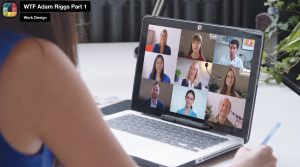 The value of the senior people coming into the office is that they create these opportunities for mentorship, they create possibly some loyalty, and they are echoing or recreating the apprentice part of the employer employee relationship. And that’s very important and it adds long-term value to our company. It adds long-term value because it makes it less likely that people leave. It makes it more likely that we can hire better people. The best people don’t necessarily want to change jobs every one or two years. They want to build something and they want to have people that they can come to with difficult problems and that they want to build trust and things like that.
The value of the senior people coming into the office is that they create these opportunities for mentorship, they create possibly some loyalty, and they are echoing or recreating the apprentice part of the employer employee relationship. And that’s very important and it adds long-term value to our company. It adds long-term value because it makes it less likely that people leave. It makes it more likely that we can hire better people. The best people don’t necessarily want to change jobs every one or two years. They want to build something and they want to have people that they can come to with difficult problems and that they want to build trust and things like that.
The longer you have a narrow view, the easier it is to make bad resource decisions. I think when it comes to the office and the value of the office, people are understanding that there might be a short-term play to dramatically cut office space if your lease lines up with it, but that there are other costs. There are costs associated with that disconnectedness between the young people who are expected to come in all the time or when they do come in. We hear this all the time. People say, I go in three days a week and I’m really grateful that my company allows the flexibility in my schedule so that I can choose. I really appreciate that. The thing I don’t appreciate is that on the days that I go in, I’m still on video calls with people who are not there, or I’m still on video calls with people who are there because they’re on another floor.
The research, especially the economists that study the labor market and study remote work specifically, people like Nick Bloom at Stanford, their findings are clear that if you want to embrace a remote or hybrid construct, that it’s organized hybrid that has the biggest benefit. Meaning if you want to give people the opportunity to work remotely two days a week, it should be specific you are coming in on these days because these are the days we’re trying to optimize and maximize our access to the benefits of being in person. So we don’t want people to come in and then feel like, ‘what’s the point?’ These are all just very deliberate decisions that need to be made on the part of the management. And so if you hear people talking about everybody has to come back to the office because that’s how it works, I think what we should hear is that that’s what they’re familiar with, that’s what they did for most of their career and that it’s not mean-spirited or anything like that. It’s really just what’s familiar to them. And also, frankly, it’s realistic because some of the tooling has not yet presented them with this really compelling alternative. So that’s the part that I think deserves the attention here. Let’s evolve the tooling. Let’s evolve the tools that you’re already using and make them better so that there’s a smaller delta between what your employees can experience and contribute when they are remote versus when they’re in the office. And then I think it really can be like a win-win-win.

